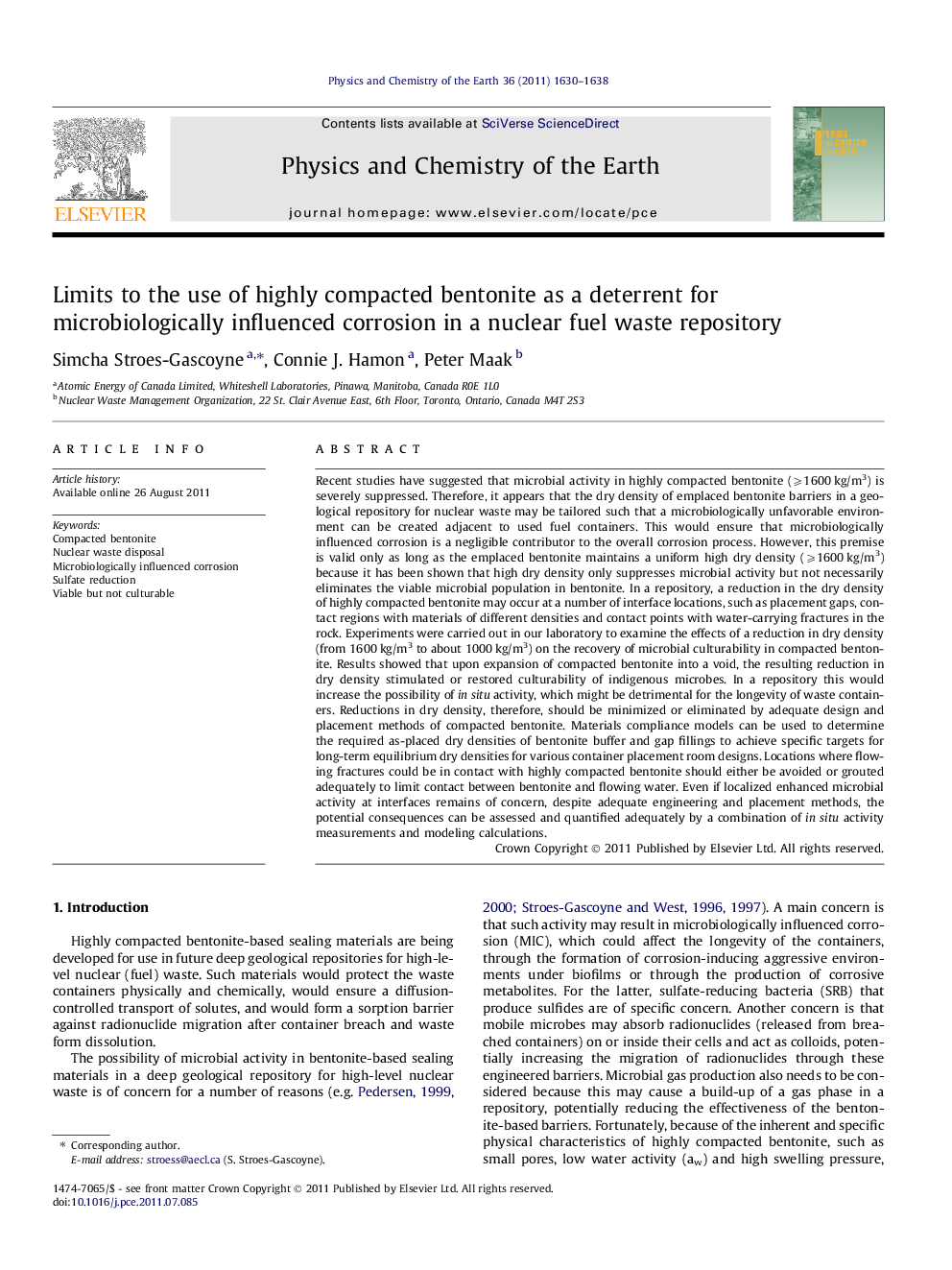| کد مقاله | کد نشریه | سال انتشار | مقاله انگلیسی | نسخه تمام متن |
|---|---|---|---|---|
| 4721242 | 1639372 | 2011 | 9 صفحه PDF | دانلود رایگان |

Recent studies have suggested that microbial activity in highly compacted bentonite (⩾1600 kg/m3) is severely suppressed. Therefore, it appears that the dry density of emplaced bentonite barriers in a geological repository for nuclear waste may be tailored such that a microbiologically unfavorable environment can be created adjacent to used fuel containers. This would ensure that microbiologically influenced corrosion is a negligible contributor to the overall corrosion process. However, this premise is valid only as long as the emplaced bentonite maintains a uniform high dry density (⩾1600 kg/m3) because it has been shown that high dry density only suppresses microbial activity but not necessarily eliminates the viable microbial population in bentonite. In a repository, a reduction in the dry density of highly compacted bentonite may occur at a number of interface locations, such as placement gaps, contact regions with materials of different densities and contact points with water-carrying fractures in the rock. Experiments were carried out in our laboratory to examine the effects of a reduction in dry density (from 1600 kg/m3 to about 1000 kg/m3) on the recovery of microbial culturability in compacted bentonite. Results showed that upon expansion of compacted bentonite into a void, the resulting reduction in dry density stimulated or restored culturability of indigenous microbes. In a repository this would increase the possibility of in situ activity, which might be detrimental for the longevity of waste containers. Reductions in dry density, therefore, should be minimized or eliminated by adequate design and placement methods of compacted bentonite. Materials compliance models can be used to determine the required as-placed dry densities of bentonite buffer and gap fillings to achieve specific targets for long-term equilibrium dry densities for various container placement room designs. Locations where flowing fractures could be in contact with highly compacted bentonite should either be avoided or grouted adequately to limit contact between bentonite and flowing water. Even if localized enhanced microbial activity at interfaces remains of concern, despite adequate engineering and placement methods, the potential consequences can be assessed and quantified adequately by a combination of in situ activity measurements and modeling calculations.
► Compacted bentonite is a suitable sealing material in nuclear waste repositories.
► Microbial activity can have negative effects in nuclear waste repositories.
► Microbial activity is suppressed severely in highly compacted bentonite.
► Microbial activity can be restored if dry density of compacted bentonite is reduced.
Journal: Physics and Chemistry of the Earth, Parts A/B/C - Volume 36, Issues 17–18, 2011, Pages 1630–1638